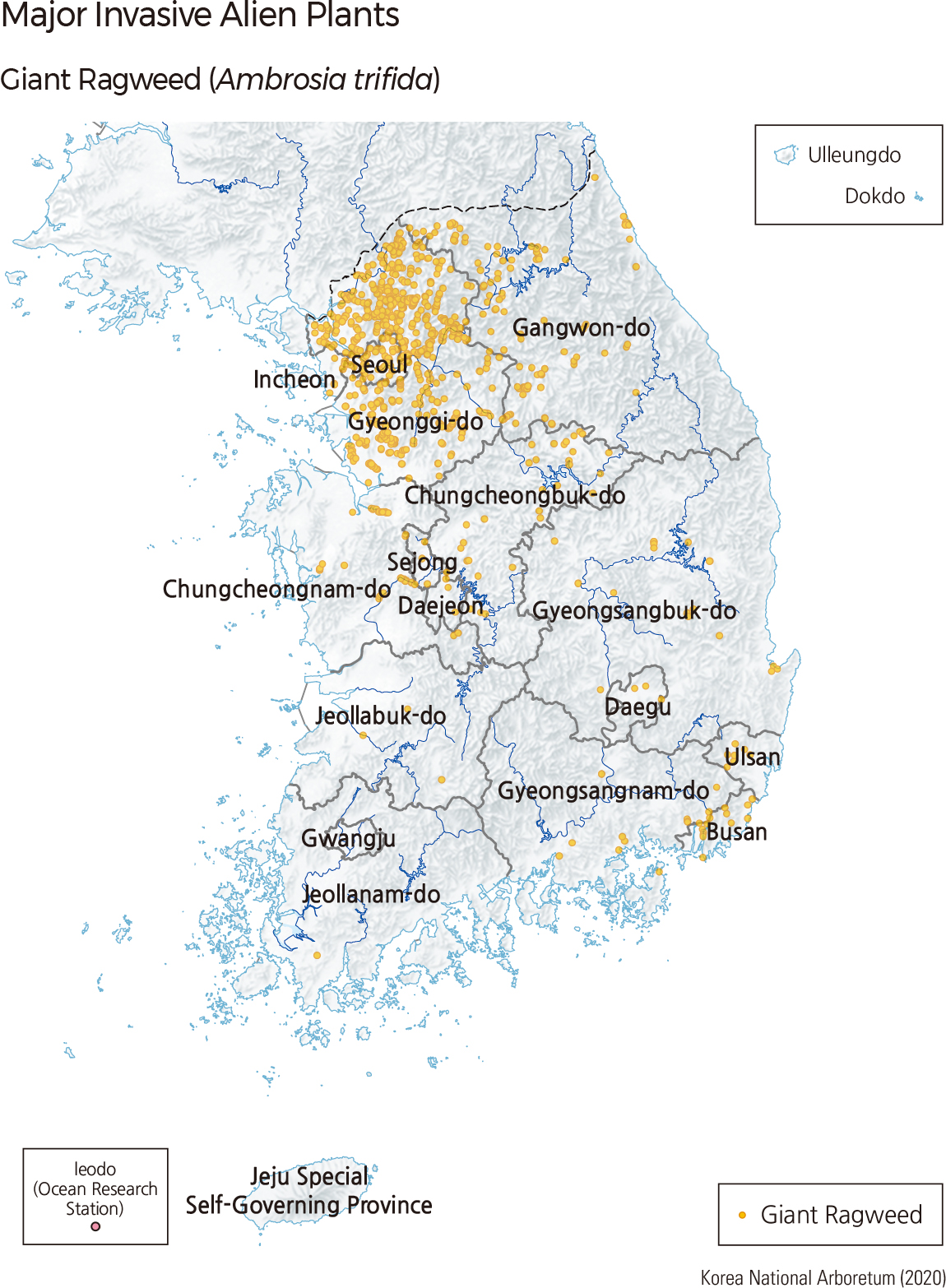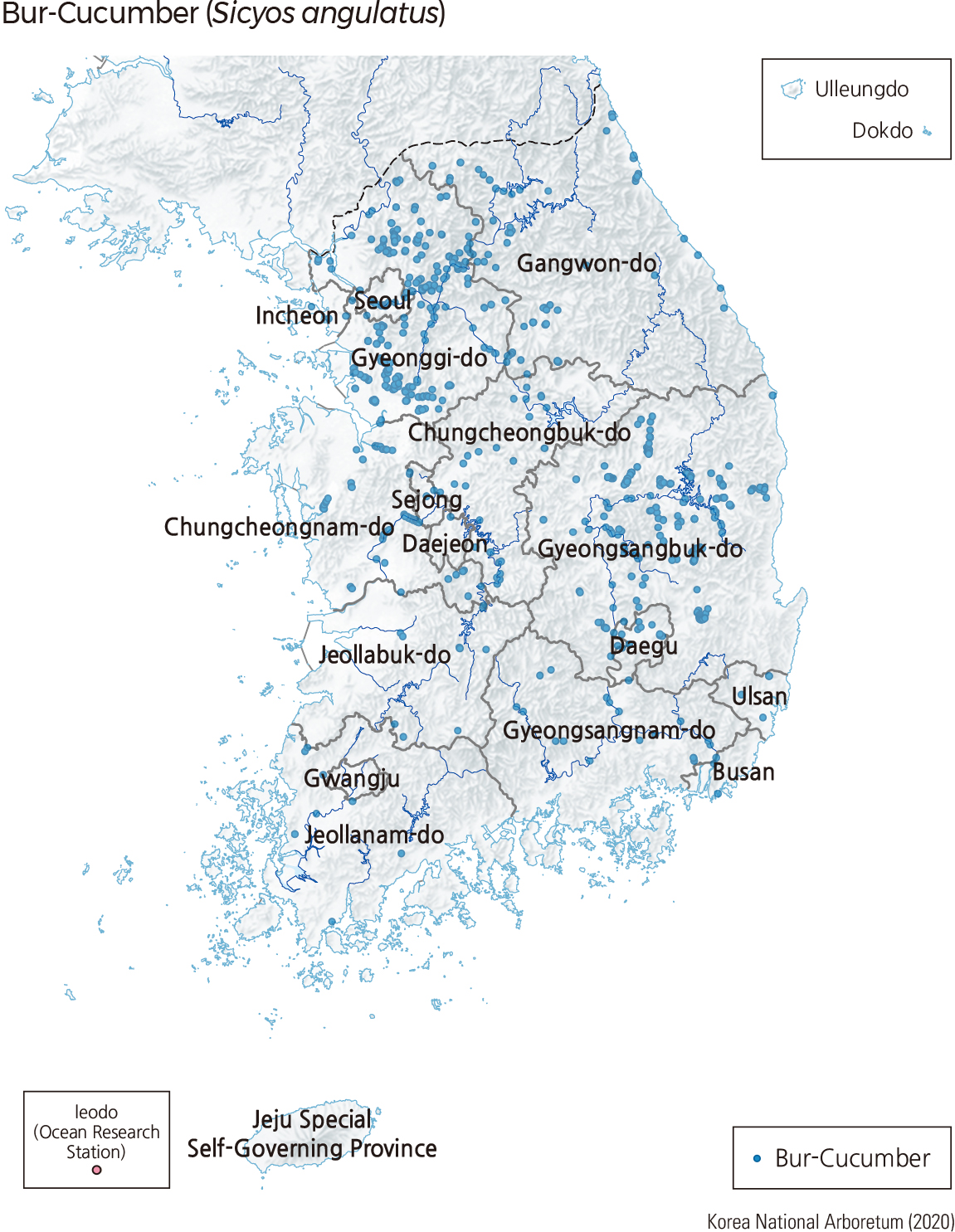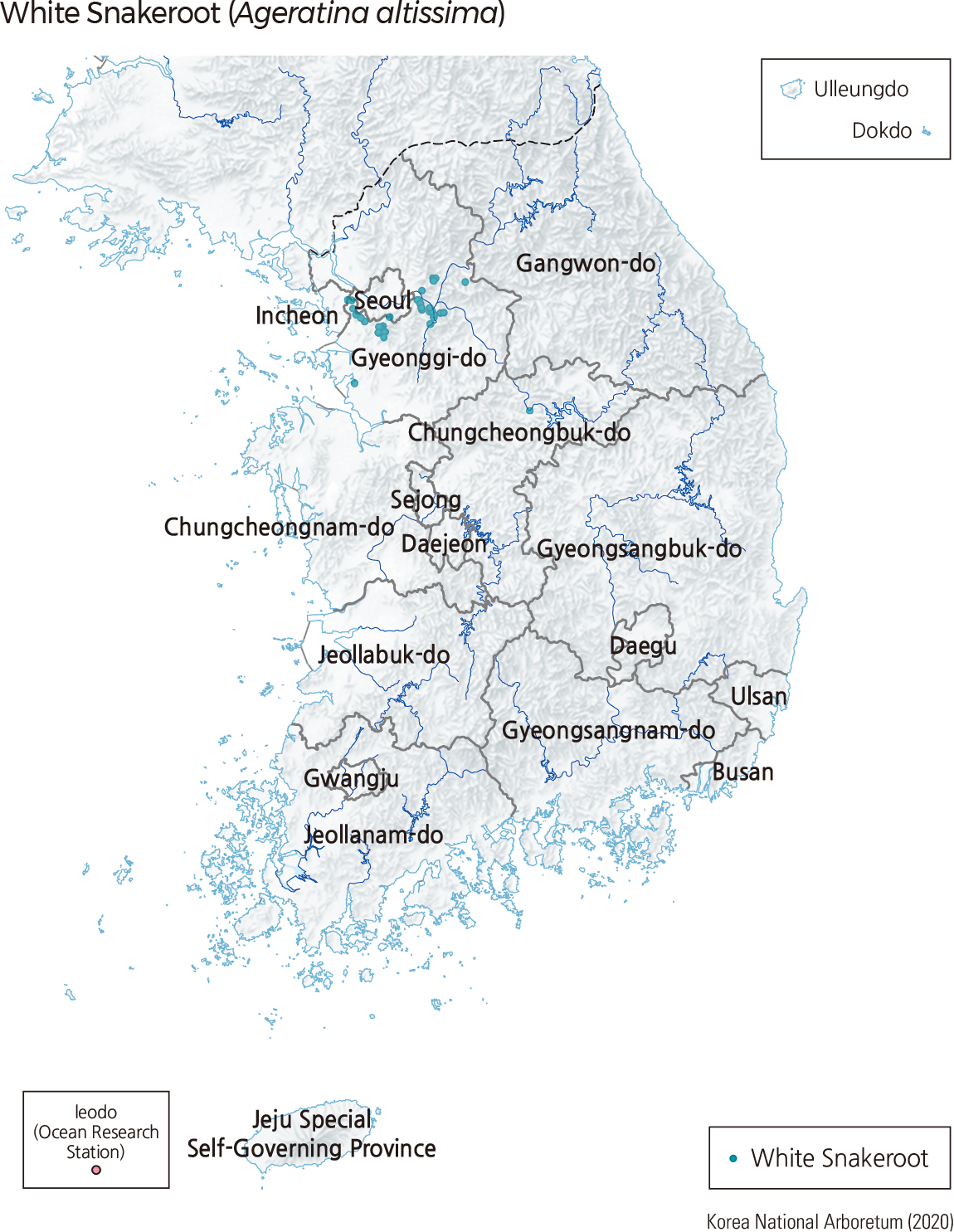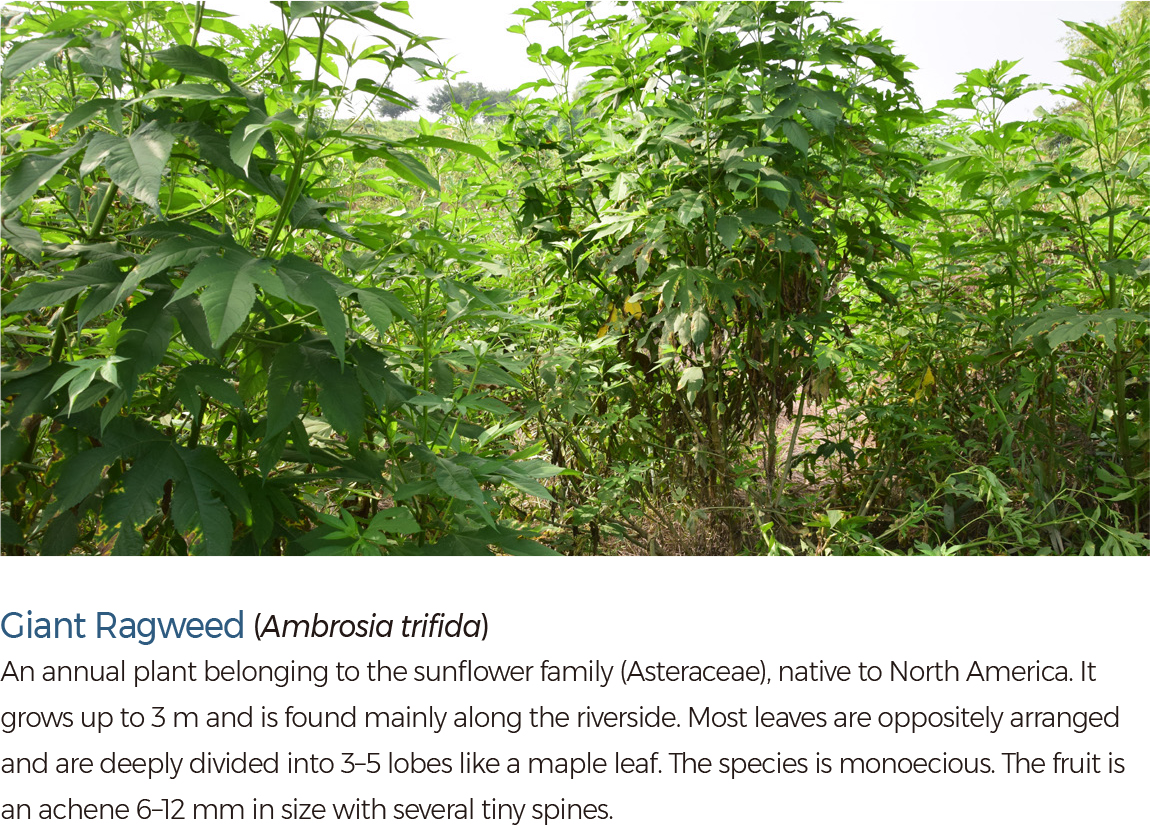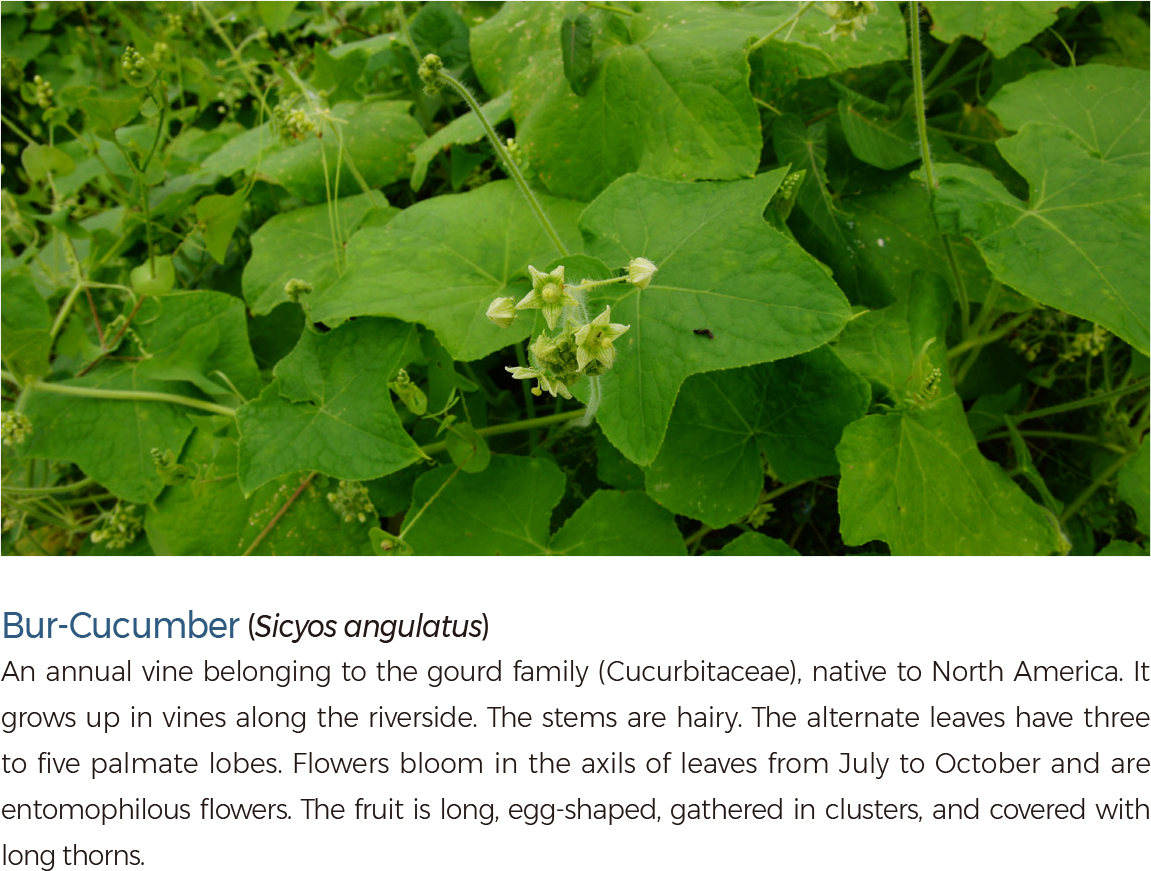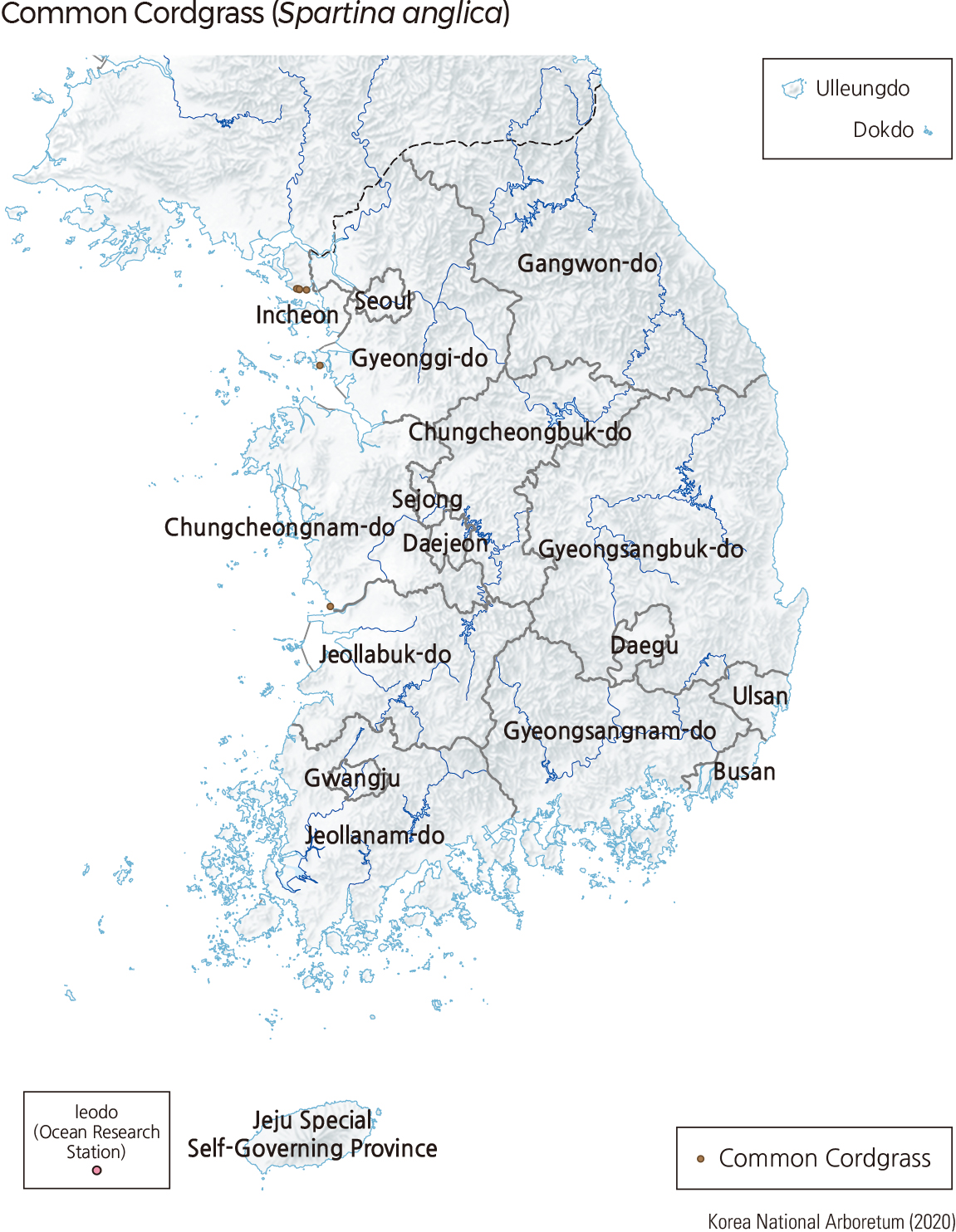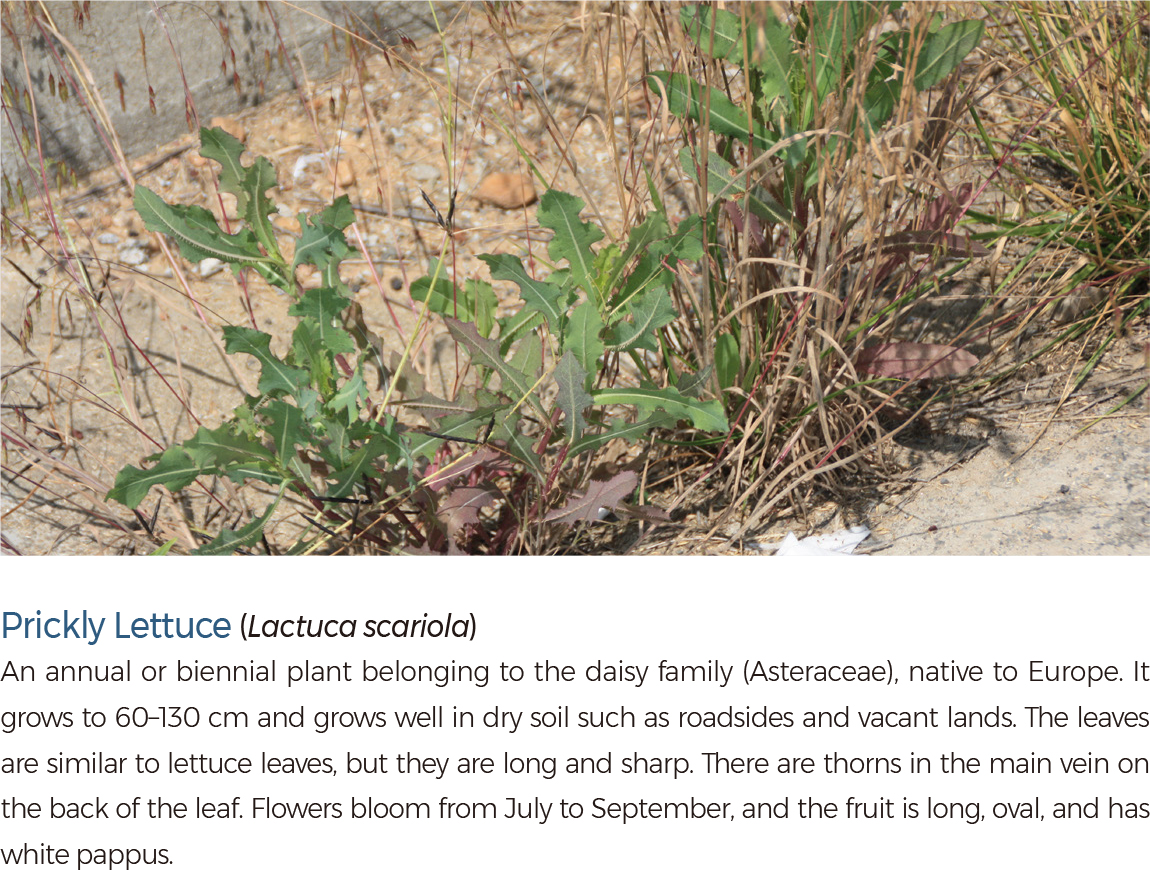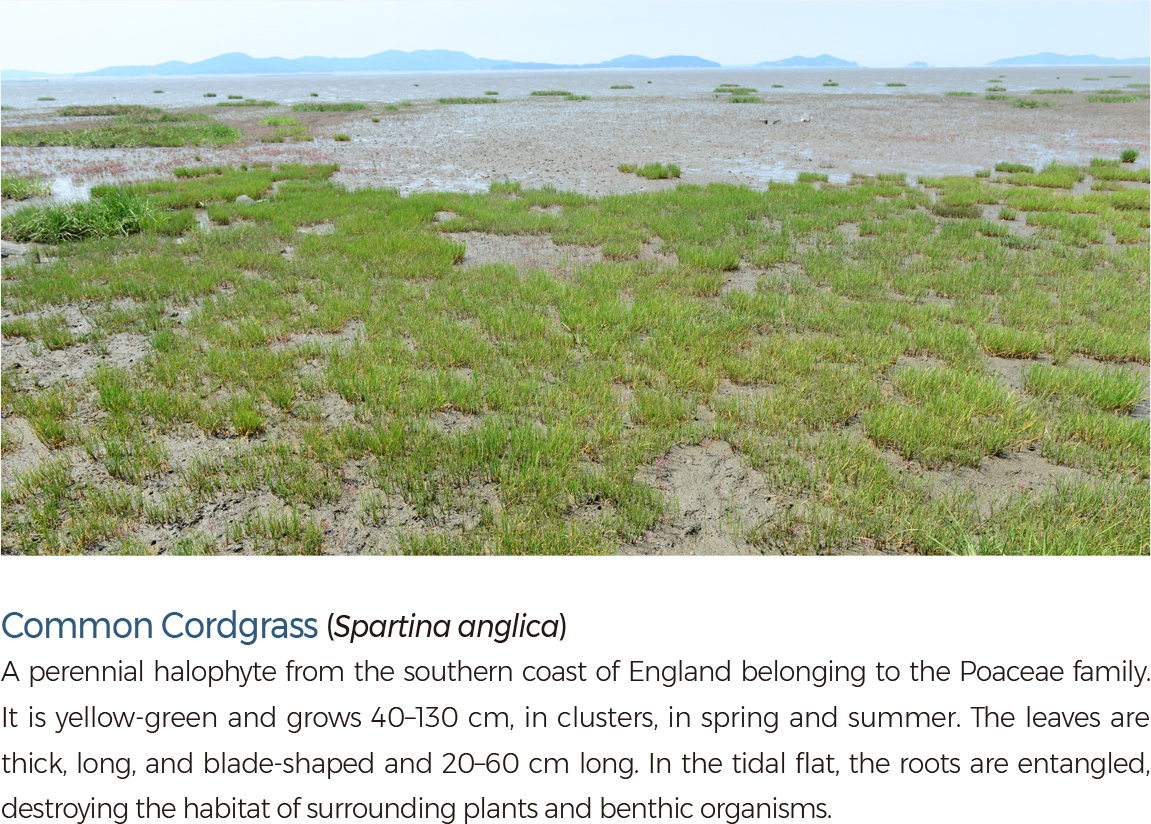English II 2020
Alien plants are plant species that have been indigenous through several generations in a natural ecosystem after being accidentally or intentionally introduced into Korea by human activities. Most plants imported from abroad, such as flowering plants that need continuous management, cannot settle in the domestic climate environment. Some plants successfully reproduce in Korea. There are about 400 species of alien plants in Korea.
Most alien plants have little impact on the domestic ecosystem. However, some alien plants reduce biodiversity and cause socioeconomic damage. In particular, invasive alien plants are plants that disturb or are likely to disturb the balance of the ecosystem in a specific area. The Minister of Environment designates and announces invasive alien plants through the ecosystem risk assessment process. The invasive alien plants are not limited to alien plants. However, as of 2020, all of the invasive alien plants of the 16 classification groups are alien plants except for Japanese Hop (Humulus japonicus).
Alien plants, designated as invasive alien plants, have better reproductive capacity than native species and have broad environmental tolerances, so they spread widely in a short period of time. Bur-cucumber, Giant Ragweed, Late Goldenrod, and Common Cordgrass reduce biodiversity by repelling native plant communities and forming single colonies. Rapid changes in plant populations caused by the reproduction of invasive alien plants can also lead to disruption of the ecosystem food chain. In addition, pollen of Annual Ragweed, Japanese Hop, and Giant Ragweed negatively affect human health by causing allergies. They also cause damage to the agricultural and livestock industries by invading pastures and agricultural lands.
Climate change and habitat destruction caused by humans increase the likelihood of the spread and settlement of alien plants. Climate changes, such as increased temperatures, changes in precipitation, and frequent flooding, are threats to endangered species but are opportunities for invasive alien plants to spread rapidly. Most invasive alien plants settle quickly in disturbed environments rather than in stable ecosystems. Therefore, continuous monitoring and research on management measures reflecting species characteristics are required to prevent the impacts to the ecosystem and social and economic damage caused by invasive alien plants. |
